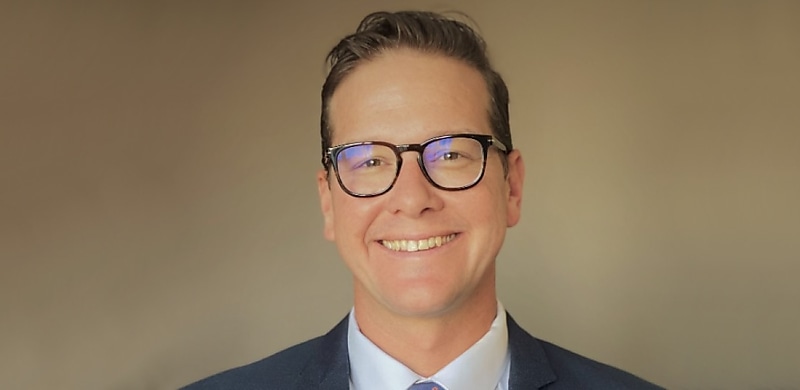
Mortgage brokers aspiring to diversify into SME broking must be open to change and prepared to service their clients on a regular basis, according to a brokerage head.
Ahead of the free SME Broker Bootcamp, Provident Lending & Business Solutions director and co-founder of Accendo Financial, Trent Carter, said the first step for those wishing to become finance brokers for small- to medium-sized enterprises (SME) is to change their business model.
“One of the biggest challenges brokers could face when diversifying into SME lending is changing the way they do things,” he told The Adviser.
“There’s a bit of an attitude of ‘if it ain’t broken, don’t fit it’. However, if brokers are passionate about diversifying, they need to change the way they do business, educate themselves to gain more confidence, and give themselves the capacity to be able to do it.”
The first step to diversifying into SME lending, Mr Carter explained, is for the broker to identify their strengths based on their aptitude, past experience and roles they have held, or interests.
“For example, if they’ve held previous roles in banking, transport, or any other industry, they might have experience in that. We find it’s very natural for those brokers to fall back on their previous experience,” he said.
Conversely, mortgage brokers who have been in broking for up to five years but have no experience in other industries could mine their database for self-employed clients, Mr Carter suggested.
“There’s no concrete formula for diversifying into SME lending,” he said.
“Brokers need to understand where their strengths may lie, and leverage that to identify clients in certain industries or geographical locations that they could best serve.”
The second step is to create messaging around how a broker’s offerings could solve a client’s problems.
“What it’s not about is going out there and telling business owners that you’re a broker with access to a certain number of lenders, and you can turn applications around in the fastest time because that’s just what brokers do,” Mr Carter said.
Instead, brokers must identify the business owners’ problems (for example, cash flow or funding requirements for business expansion or equipment purchase) and communicate how they could solve these problems.
“The third step is to go out and find these SME clients,” Mr Carter said.
“Your database is the natural and comfortable place to start because you’ve probably dealt with those clients in the past. But it would be good to become involved with business associations or the Chamber of Commerce. Attend networking meetings. Talk to potential clients and start turning their heads to a business-to-business type mentality when working with brokers.”
Building a sustainable brokerage with capacity
Doing this could enable SME brokers to build a steady income flow because SME lending is less centred on transactions and more focused on building a portfolio of services for clients.
For example, while writing home loans is transactional – and a broker may have to wait three to four years to work with the client again to refinance their loan – business owners have ongoing needs, Mr Carter pointed out.
This could include “small ticket items”, such as asset finance for purchasing equipment, working capital funding to boost growth, or assisting them with purchasing commercial property.
“Over time, what we find is that SME brokers deal with their clients more frequently due to these needs, rather than just waiting for the next transaction,” Mr Carter observed.
Creating more capacity by delegating “low-value” tasks is also critical for SME brokers because this allows them to focus on higher-value tasks such as educating themselves on SME lending, understanding business financials, and becoming confident enough to conduct conversations with business owners.
How to value your time
Converting commissions into hourly rates could also assist brokers with valuing their time, Mr Carter advised.
“Some brokers get caught up in the doing, like keying entries into ApplyOnline, or waiting on hold with lenders. While this is important work, it’s not the best use of a broker’s time,” he said.
“Brokers may calculate an hourly rate of between $180 and $250 an hour. That makes them a very expensive administrative support person in their business.”
Instead, they could employ someone in-house or outsource these tasks to reduce costs.
He concluded: “Then you can spend more time on high-value tasks such as doing financial analysis, discussing expansion opportunities, helping clients access finance, and finding new clients.
“By getting more time back in your business, you will grow capacity and increase your revenue.”
Trent Carter will unpack how to diversify into SME lending at the free SME Broker Bootcamp. He will also give you a tool to calculate your hourly rate and tips to get a bang for your buck.
The 2023 SME Broker Bootcamp will take place in the following locations:
Wednesday, 6 September: Rydges South Bank, Brisbane
Tuesday, 12 September: Montage, Sydney
Thursday, 14 September: Zinc, Melbourne
Places are limited for this free conference so book your place now by registering here.
For more information about the conference, including agenda and speakers, click here.
[Related: Hear direct from Trent Carter on what you’ll gain by attending the SME Broker Bootcamp 2023]
 Login
Login











JOIN THE DISCUSSION